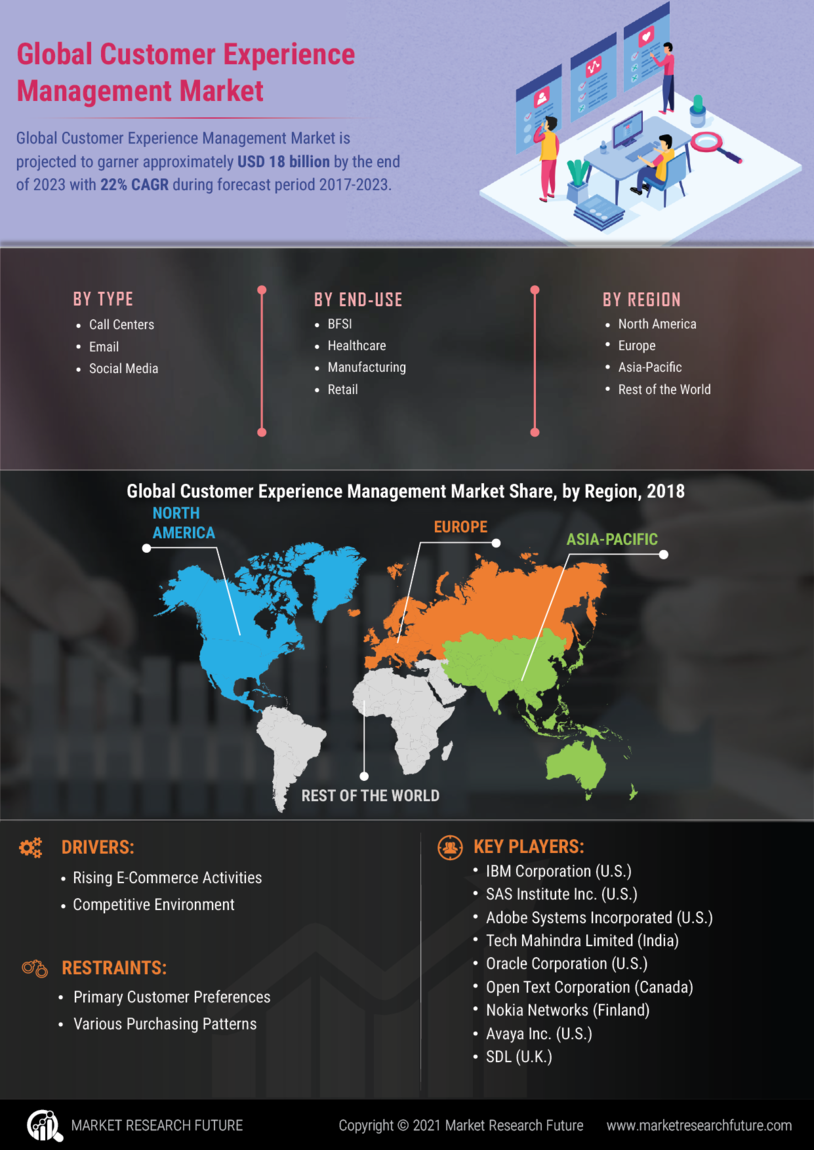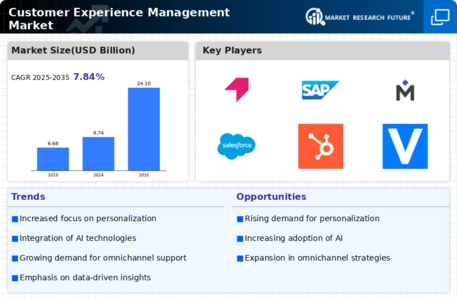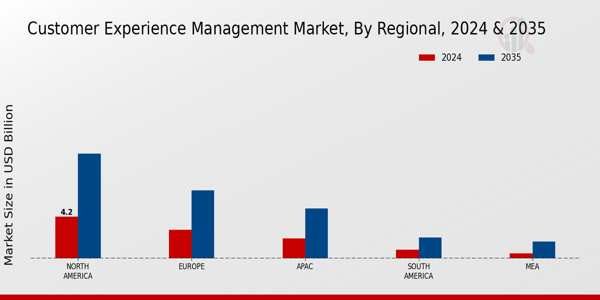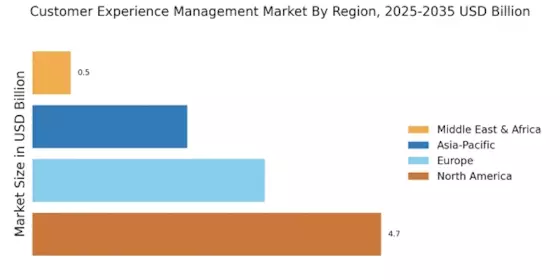Increased Competition
In the Customer Experience Management Market, the competitive landscape is intensifying. Companies across various sectors are recognizing that superior customer experience can serve as a differentiator in a crowded marketplace. This realization has led to a significant increase in investments in customer experience initiatives. Data suggests that organizations prioritizing customer experience outperform their competitors by 80% in revenue growth. Consequently, businesses are adopting advanced customer experience management tools to gain a competitive edge, streamline operations, and foster customer loyalty.
Technological Advancements
The Customer Experience Management Market is being transformed by rapid technological advancements. Innovations such as artificial intelligence, machine learning, and big data analytics are enabling organizations to gather and analyze customer data more effectively. These technologies facilitate the creation of personalized experiences, allowing businesses to anticipate customer needs and preferences. As per industry reports, the integration of AI in customer experience management can lead to a 30% increase in customer satisfaction. This trend underscores the importance of leveraging technology to enhance customer interactions and drive business growth.
Rising Consumer Expectations
The Customer Experience Management Market is currently witnessing a surge in consumer expectations. Customers increasingly demand personalized and seamless interactions across various touchpoints. This shift is driven by the proliferation of digital technologies, which have empowered consumers to expect immediate responses and tailored experiences. According to recent data, 80% of consumers indicate that the experience a company provides is as important as its products or services. As a result, businesses are compelled to invest in customer experience management solutions to meet these heightened expectations, thereby enhancing customer satisfaction and loyalty.
Shift Towards Omnichannel Strategies
The Customer Experience Management Market is experiencing a notable shift towards omnichannel strategies. Businesses are increasingly adopting a holistic approach to customer interactions, ensuring a consistent experience across all channels, whether online or offline. This trend is driven by the need to meet customers where they are and provide seamless transitions between different platforms. Data reveals that companies with strong omnichannel strategies retain 89% of their customers, compared to 33% for those with weak strategies. This underscores the critical role of omnichannel customer experience management in fostering customer loyalty and satisfaction.
Growing Importance of Customer Feedback
In the Customer Experience Management Market, the emphasis on customer feedback is becoming increasingly pronounced. Organizations are recognizing that understanding customer sentiments is crucial for improving service delivery and product offerings. The ability to collect, analyze, and act on customer feedback can significantly influence customer retention rates. Recent studies indicate that companies that actively seek and respond to customer feedback can see a 25% increase in customer loyalty. This trend highlights the necessity for businesses to implement robust feedback mechanisms as part of their customer experience management strategies.



















Leave a Comment